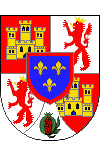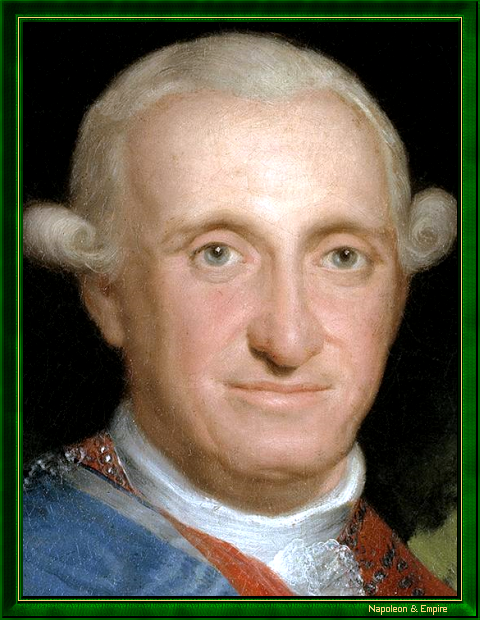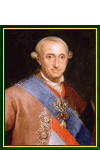King of Spain from 1788 to 1808
Pronunciation:

The future Charles IV was born on November 11, 1748 in Portici, in the Kingdom of the Two Sicilies, Italy. He was the son of Marie-Amélie de Saxe and King Charles III of Spain, whom he succeeded on December 14, 1788.
From the outset, the new king was hostile to the French Revolution. A military demonstration on the Franco-Spanish border after the execution of Louis XVI led to the two countries going to war on March 7, 1793. The conflict ended two years later, on July 22, 1795, with the Peace of Basel, which earned his prime minister, Manuel de Godoy, the title of Prince of Peace.
Charles IV, with his self-effacing personality and mediocre intelligence, left the running of the country to Godoy, whose qualities as the king's favorite and the queen's lover qualified him well for the job. Under his leadership, Spain became a docile satellite of France, to the point of worrying the country, which could hardly bear to see French troops concentrated on its soil. As for the King, he was still, at the end of 1807 and beginning of 1808, exhorting the population to see the imperial troops only as allies and friends.
Led by his minister, who saw the opposition organized under the impetus of Crown Prince Ferdinand, Charles IV was on the point of leaving his country for America when an insurrection broke out on March 18, 1808. On the 19th, Charles IV abdicated in favor of his son, who became Ferdinand VII. Godoy, imprisoned, owed his life only to the intervention of Joachim Murat, already occupying Madrid with the title of the Emperor's Lieutenant in Spain. Napoleon summoned the whole entourage to Bayonne.
Charles IV arrived on May 1, and on May 5 placed his crown (which he had already renounced) at Napoleon 1's disposal. Ferdinand and his brothers accepted their father's decision on the 10th.
An annual endowment of eight million francs was granted to the ex-king to soften any regrets. He was then sent to Fontainebleau, then to Compiègne, and finally to Marseille, where he lived until 1811. He then settled in Rome, in a magnificent castle, the Palazzo Barberini, where he lived happily ever after (I'm happier here than at the Escurial
, he used to say), collecting paintings and making music. His son, restored to the Spanish throne in December 1813, was careful not to disturb this bliss.
Charles IV died in Rome on January 20, 1819. He now rests in the Pantheon of Kings at the Escurial Palace in Spain.
"King Charles IV of Spain" by Francisco José de Goya y Lucientes (Fuendetodos 1746 - Bordeaux 1828).

In 1978, Los Correos de España (Spanish Post Office) issued a 12 Peseta stamp bearing the effigy of King Charles IV.
Other portraits

Enlarge
"Charles IV of Spain" painted in 1789 by José Vergara Gimeno (Valencia 1726 - Valencia 1799).